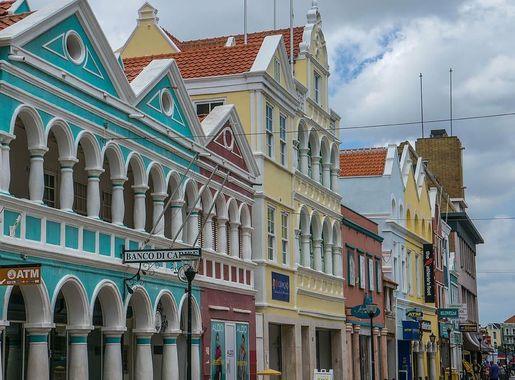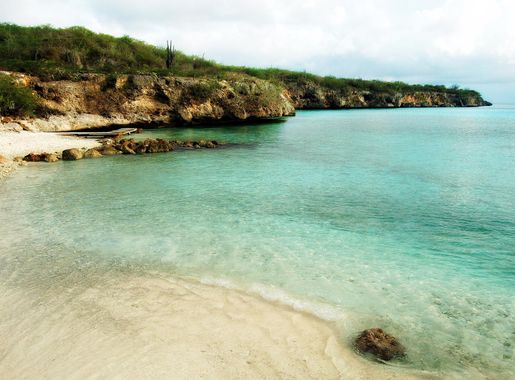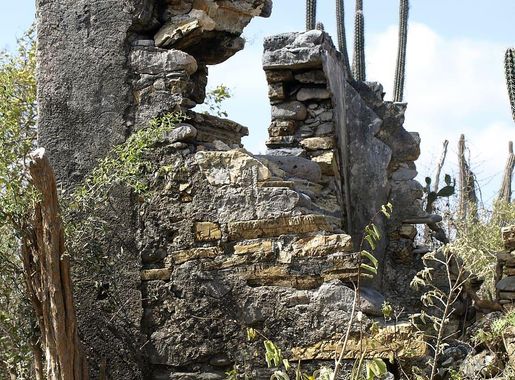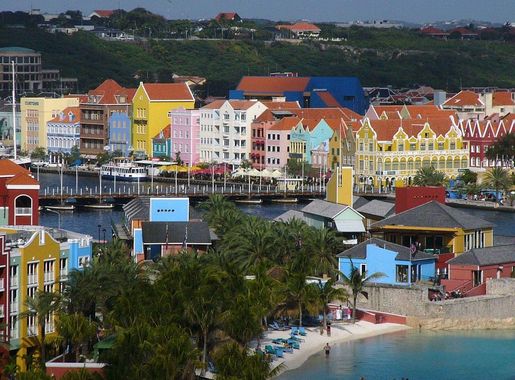
Groot Santa Martha: A Hidden Gem in Curacao
Discover the serene beauty of Groot Santa Martha in Curacao, where history, nature, and tranquility meet in perfect harmony.
Nestled on the western side of Curacao, Groot Santa Martha is a charming and tranquil village that offers a unique blend of natural beauty and rich cultural heritage. The centerpiece of this enchanting location is the stunning Groot Santa Martha Bay, where crystal-clear waters meet lush green landscapes. Visitors can enjoy a peaceful escape from the hustle and bustle of city life while soaking in the breathtaking views of the Caribbean Sea. A visit to Groot Santa Martha is incomplete without exploring the historic Groot Santa Martha Plantation House. This beautifully preserved estate provides a glimpse into the island's colonial past, with its elegant architecture and well-manicured gardens. The plantation house also hosts a small museum, where you can learn about the history of the area and the lives of those who once lived and worked there. Outdoor enthusiasts will find plenty to do in Groot Santa Martha. The area is perfect for hiking, with several trails offering panoramic views of the bay and surrounding hills. Bird watchers will be delighted by the variety of species that call this area home, including flamingos that can often be seen wading in the shallow waters. For those who prefer water activities, kayaking, and paddleboarding in the calm bay waters are popular choices.
Local tips in Groot Santa Martha
- Visit early in the morning to enjoy the serene atmosphere and avoid the midday heat.
- Bring binoculars for bird watching, especially if you want to spot the local flamingos.
- Wear comfortable shoes for hiking and exploring the plantation grounds.
- Pack a picnic to enjoy by the bay, but remember to clean up after yourself to preserve the natural beauty.
Groot Santa Martha: A Hidden Gem in Curacao
Nestled on the western side of Curacao, Groot Santa Martha is a charming and tranquil village that offers a unique blend of natural beauty and rich cultural heritage. The centerpiece of this enchanting location is the stunning Groot Santa Martha Bay, where crystal-clear waters meet lush green landscapes. Visitors can enjoy a peaceful escape from the hustle and bustle of city life while soaking in the breathtaking views of the Caribbean Sea. A visit to Groot Santa Martha is incomplete without exploring the historic Groot Santa Martha Plantation House. This beautifully preserved estate provides a glimpse into the island's colonial past, with its elegant architecture and well-manicured gardens. The plantation house also hosts a small museum, where you can learn about the history of the area and the lives of those who once lived and worked there. Outdoor enthusiasts will find plenty to do in Groot Santa Martha. The area is perfect for hiking, with several trails offering panoramic views of the bay and surrounding hills. Bird watchers will be delighted by the variety of species that call this area home, including flamingos that can often be seen wading in the shallow waters. For those who prefer water activities, kayaking, and paddleboarding in the calm bay waters are popular choices.
When is the best time to go to Groot Santa Martha?
Iconic landmarks you can’t miss
Queen Emma Bridge
Discover the stunning Queen Emma Bridge, a floating architectural gem in Willemstad, Curaçao, offering breathtaking views and rich cultural experiences.
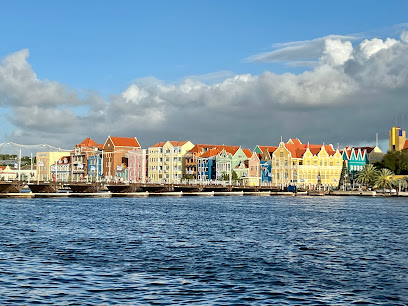
Landhuis Chobolobo
Explore the heritage and craftsmanship behind Curaçao's famous Blue Curacao liqueur at Landhuis Chobolobo in Willemstad.
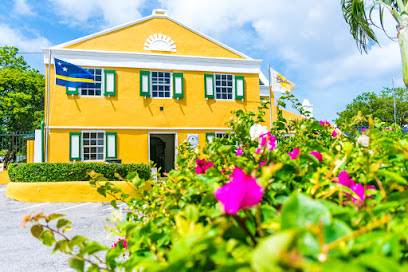
Old Market
Discover the vibrant flavors and rich history of Old Market in Willemstad, Curaçao – a culinary paradise and cultural hotspot for every traveler.
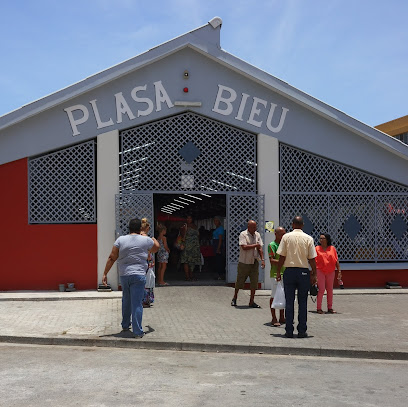
Curaçao Ostrich Farm
Explore the fascinating world of ostriches at Curaçao Ostrich Farm, a unique wildlife experience surrounded by stunning Caribbean landscapes.
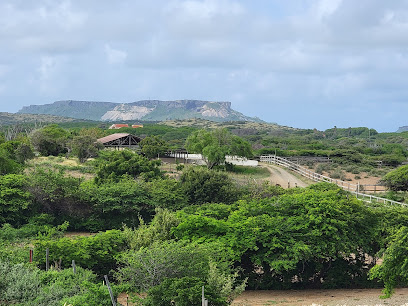
Flamingos
Discover the vibrant beauty of Flamingos in Curaçao, a premier bird watching area where nature and tranquility unite for an unforgettable experience.
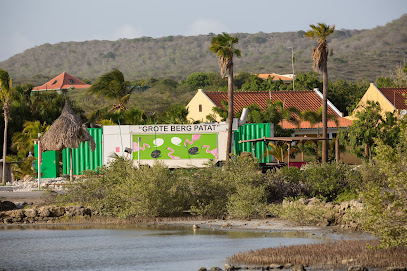
Shete Boka National Park
Experience the rugged beauty and dramatic coastlines at Shete Boka National Park in Curaçao, a natural haven for adventure and photography.
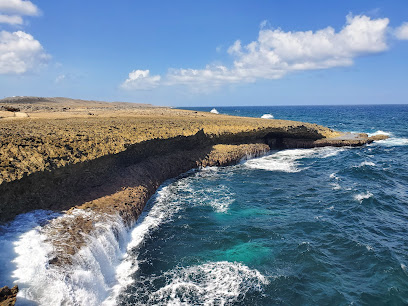
Museum Kura Hulanda
Explore the rich history of Curacao at Museum Kura Hulanda, a cultural gem showcasing the island's diverse heritage and legacy.
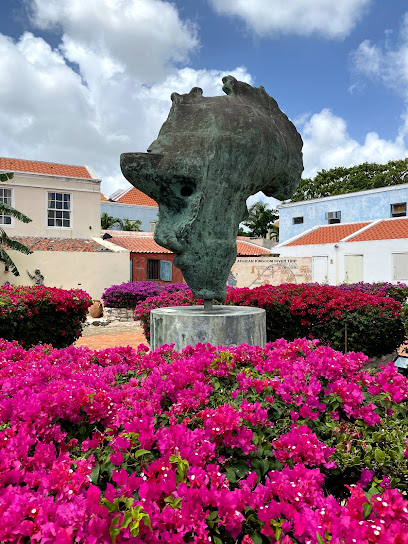
Boka Pistol
Discover the breathtaking cliffs and vibrant marine life at Boka Pistol, a stunning natural attraction in Curaçao's Shete Boka National Park.
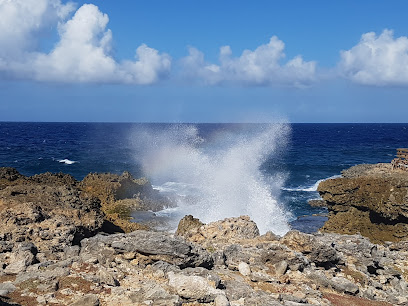
Fort Beekenburg
Explore Fort Beekenburg, a historic landmark in Jan Thiel, Curaçao, showcasing colonial architecture and stunning Caribbean views.
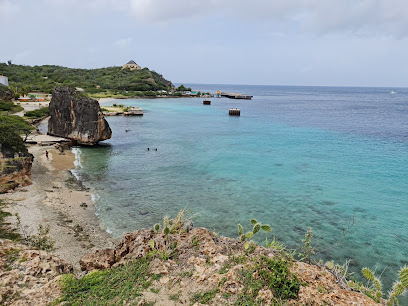
Tugboat Beach
Discover the tranquility and beauty of Tugboat Beach in Curaçao, a hidden gem for relaxation, snorkeling, and stunning Caribbean views.
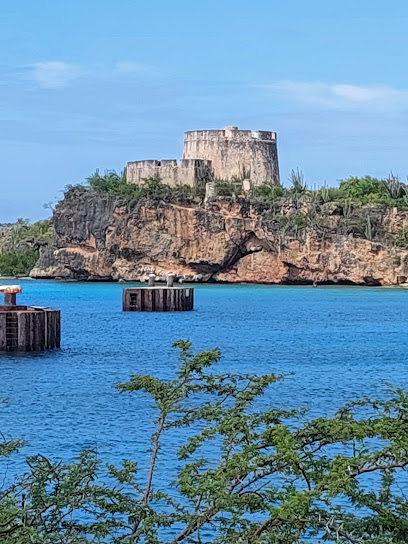
The Curaçao Museum
Discover the vibrant history and art of Curaçao at The Curaçao Museum, a cultural hub in Willemstad showcasing the island's unique heritage.
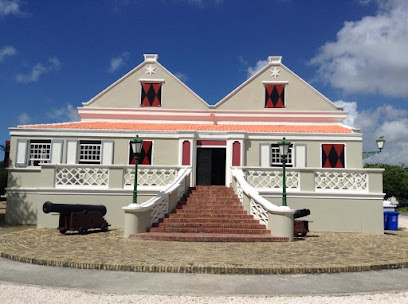
Landhuis Klein Santa Martha hotel
Discover the tranquil beauty of Landhuis Klein Santa Martha, a charming hotel in Curaçao that combines comfort, culture, and stunning views of the Caribbean.

Curacao Maritime History Museum / A treasure chest full of history
Uncover the fascinating maritime history of Curacao at this engaging museum celebrating its rich nautical heritage and cultural significance.

Boka Wandomi
Experience the breathtaking beauty of Boka Wandomi, a stunning cove in Curaçao renowned for its crystal-clear waters and vibrant marine life.

Landhuis Bloemhof cultural center
Explore the artistic treasures and serene gardens of Landhuis Bloemhof, a cultural gem in Willemstad, Curaçao, perfect for art and nature lovers.
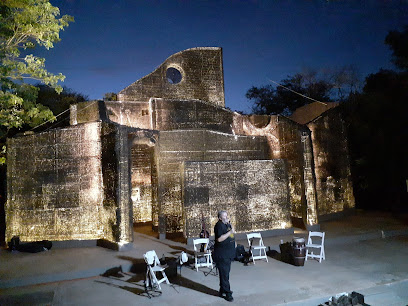
Unmissable attractions to see
Queen Emma Bridge
Experience the charm of Queen Emma Bridge, a historic floating bridge in Willemstad, Curaçao, offering breathtaking views and a vibrant local atmosphere.
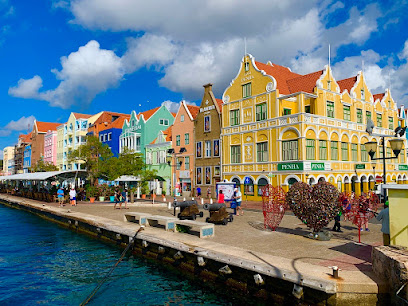
Playa Porto Mari
Discover the stunning Playa Porto Mari in Curaçao, a perfect blend of relaxation, snorkeling, and local cuisine at this tropical paradise.
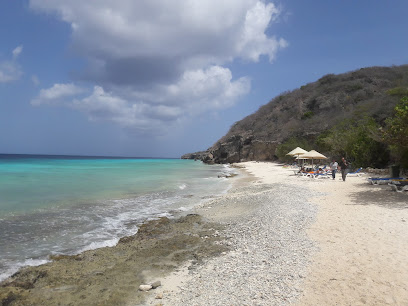
Landhuis Chobolobo
Experience the rich history and unique flavors of Curaçao at Landhuis Chobolobo, the home of Blue Curaçao liqueur.
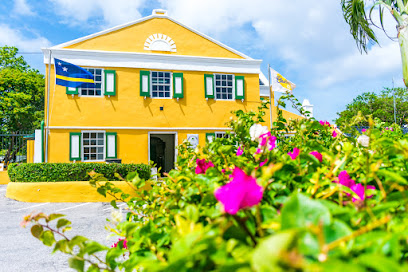
Hato Caves
Uncover the hidden wonders of Hato Caves in Curaçao, where nature's beauty meets ancient history in a breathtaking underground adventure.

Playa Lagun
Experience the serene beauty of Playa Lagun, Curaçao - a tropical paradise for beach lovers and snorkeling enthusiasts alike.
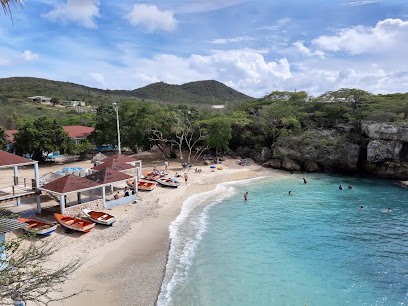
Playa Kalki
Explore the tranquil beauty of Playa Kalki in Curaçao, a hidden gem known for its clear waters and vibrant snorkeling opportunities.

Morena Eco Resort
Discover the enchanting Morena Eco Resort on Jan Thiel Beach, a perfect blend of luxury and ecological beauty in Willemstad, Curaçao.

The Curaçao Museum
Explore the heart of Curaçao's culture at The Curaçao Museum, showcasing a rich collection of art and historical treasures in Willemstad.
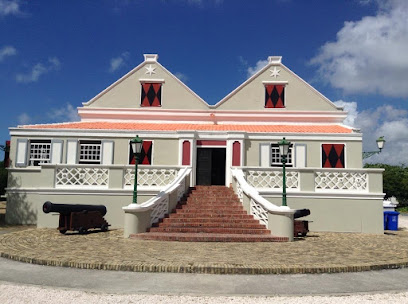
Curacao Maritime History Museum / A treasure chest full of history
Explore Curacao's maritime legacy at the Curacao Maritime History Museum, a treasure trove of history and culture nestled in the heart of Willemstad.

Landhuis Bloemhof cultural center
Discover the artistic heart of Curaçao at Landhuis Bloemhof, a cultural center blending art, history, and nature in a serene setting.
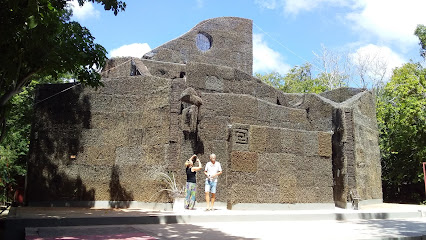
Playa Santa Cruz
Discover the serene beauty of Playa Santa Cruz, a tranquil beach in Curaçao perfect for sunbathing, swimming, and snorkeling amidst stunning natural landscapes.
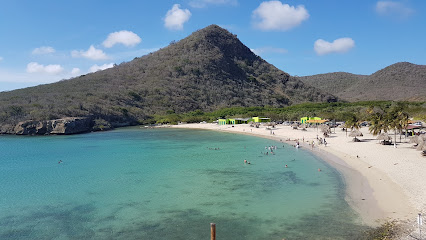
Hòfi Mango
Discover Hòfi Mango, a serene park in Curaçao, where lush gardens and nature converge to create an unforgettable experience.
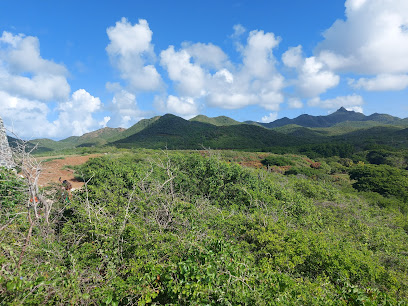
Santa Martha Bay View Lookout Point
Discover stunning panoramic views of the Caribbean at Santa Martha Bay View Lookout Point, a natural gem in Curaçao perfect for relaxation and photography.
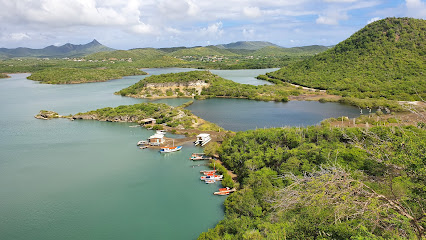
Playa Kanoa
Explore the stunning Playa Kanoa in Curaçao, where pristine beaches meet vibrant marine life and serene sunsets create unforgettable memories.
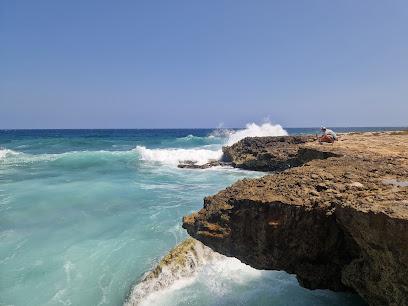
Quarantine house
Explore the historic Quarantine House in Willemstad, Curaçao, a heritage building that showcases the island's rich history and architectural beauty.

Essential places to dine
Restaurant & Café Gouverneur De Rouville
Experience authentic Caribbean flavors and stunning views at Restaurant & Café Gouverneur De Rouville in Willemstad.
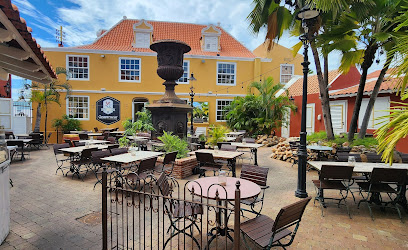
Karakter Beach - Lounge - Restaurant
Experience exquisite dining and breathtaking views at Karakter Beach – your ultimate Caribbean getaway.

Brisa Do Mar
Experience exquisite Caribbean cuisine with stunning sea views at Brisa Do Mar, a culinary jewel in Jan Thiel, Curaçao.

La Bohème Curaçao
Experience Caribbean flavors at La Bohème Curaçao - where every meal is a delightful journey into local cuisine.

Eetcafé De Buurvrouw
Experience authentic Caribbean cuisine at Eetcafé De Buurvrouw in beautiful Curaçao - where every meal tells a story.

Sea Side Terrace
Experience exquisite seafood dining with stunning ocean views at Sea Side Terrace in Willemstad, Curaçao.
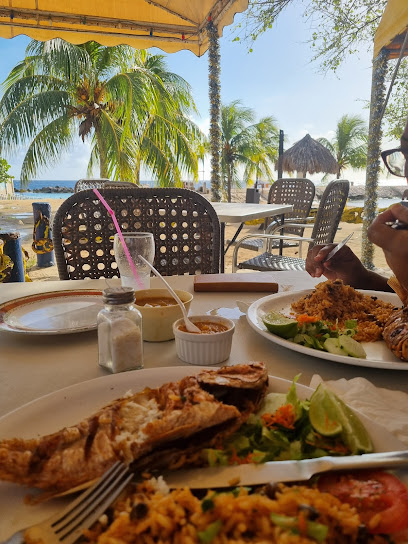
Number Ten Curaçao
Experience authentic Caribbean flavors at Number Ten Curaçao - a charming café and restaurant in the heart of Willemstad.
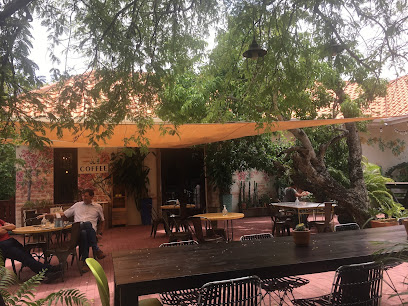
Perla Del Mar
Experience authentic Curaçaoan cuisine at Perla Del Mar in Willemstad – where every dish tells a story.
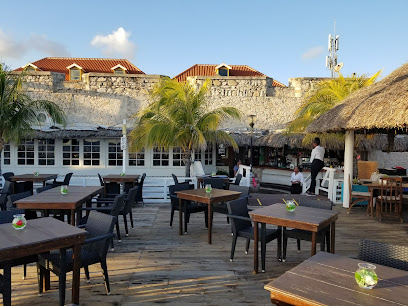
MOOD Beach Curacao
Experience culinary delights with stunning ocean views at MOOD Beach Curacao - your perfect beachside getaway.
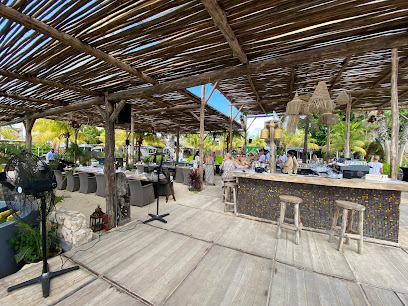
Koko's
Discover Koko's in Jan Thiel for an unforgettable dining experience with local flavors and stunning views in Curaçao.
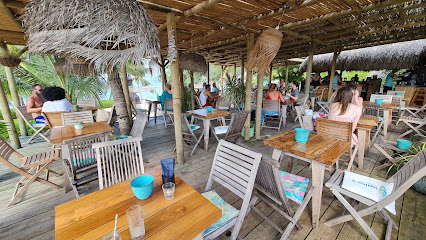
Rozendaels
Discover authentic Caribbean cuisine at Rozendaels in Willemstad - a culinary gem offering vibrant flavors and warm hospitality.
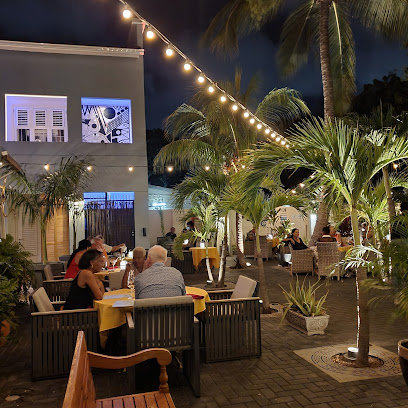
Fish & Joy Bistro & Wine Bar Curaçao
Experience exquisite cuisine and a warm atmosphere at Fish & Joy Bistro & Wine Bar in Willemstad, Curaçao – a must-visit for food lovers.
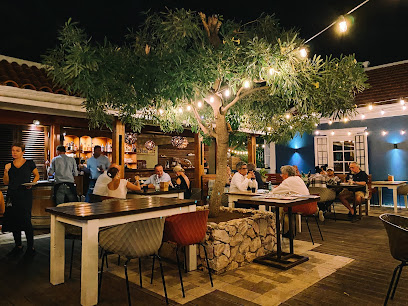
Boca 19 Curaçao
Experience exquisite dining at Boca 19 Curaçao with fresh seafood and stunning ocean views at Santa Barbara Beach & Golf Resort.
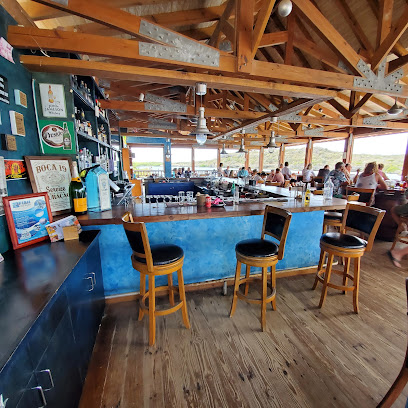
Koraal Rooftop Terrace
Discover Koraal Rooftop Terrace: A culinary oasis in Curaçao with stunning views and delicious fusion cuisine.

Bistro e lanternu
Discover Bistro e Lanternu in Curaçao – where exquisite local flavors meet warm Caribbean hospitality in an inviting bistro setting.

Markets, malls and hidden boutiques
Renaissance Mall & Rif Fort
Experience shopping, dining, and history at Renaissance Mall & Rif Fort, a vibrant destination in Willemstad, Curaçao.

Sambil Curacao
Discover the vibrant shopping and dining experience at Sambil Curacao, the ultimate destination for tourists in Willemstad.
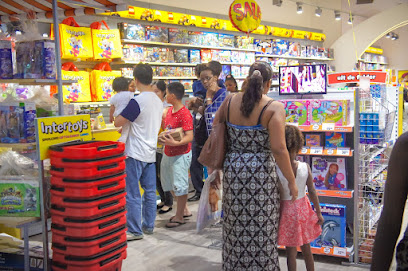
Zuikertuin Mall
Experience the vibrant shopping hub of Zuikertuin Mall in Willemstad, Curaçao, featuring diverse stores, local dining, and a lively atmosphere.

La Curacao
Explore La Curacao in Willemstad for a unique shopping experience filled with local culture and diverse products.
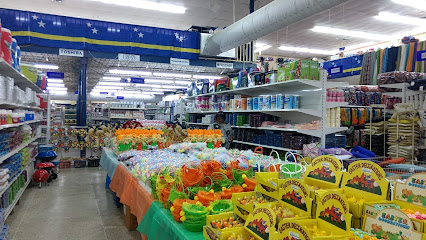
Landhuis Klein Santa Martha hotel
Experience the serene beauty of Landhuis Klein Santa Martha, a charming hotel offering stunning views and exceptional service in Soto, Curaçao.

Serena's Art Factory
Experience the vibrant essence of Curaçao through the captivating art at Serena's Art Factory, a must-visit for art lovers and cultural enthusiasts.
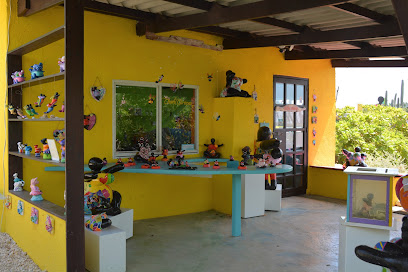
Promenade Shopping Center
Explore the Promenade Shopping Center in Willemstad, a vibrant shopping haven offering local boutiques, international brands, and delightful dining experiences.
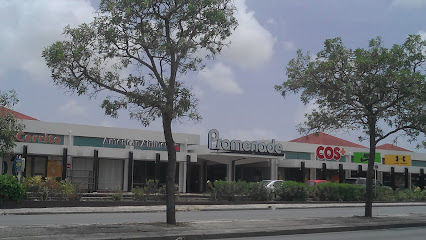
Bloempot Shopping Center
Explore Bloempot Shopping Center in Willemstad - a vibrant shopping destination with local flair, unique finds, and delicious dining options.
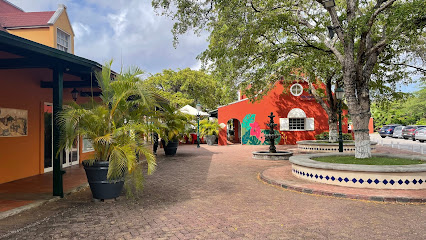
Chichi Shop Punda
Discover unique local crafts and vibrant souvenirs at Chichi Shop Punda, the perfect destination for capturing the essence of Curacao.
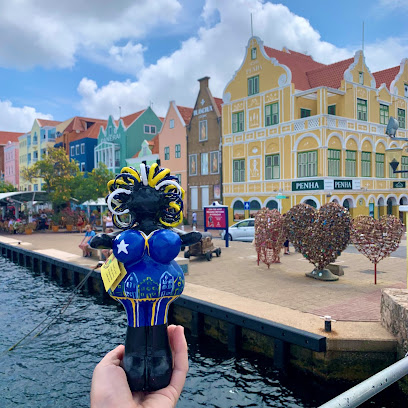
Sweetheart Curacao
Explore Sweetheart Curacao, the enchanting toy store in Willemstad offering a delightful selection for kids and adults alike.

Island Treasures
Explore the charm of Curaçao through unique local crafts and souvenirs at Island Treasures in Willemstad.
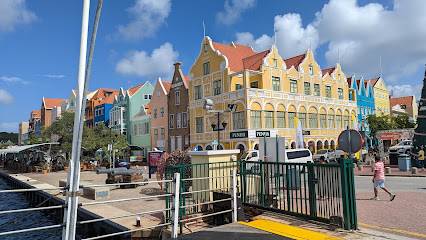
I love Curacao #The hidden beauty of the Caribbean
Explore the vibrant culture of Curacao through handmade crafts and unique souvenirs at this charming store in Riff Fort.
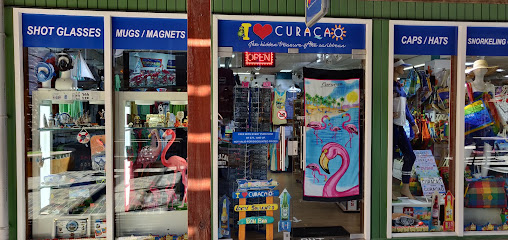
Britt Shop
Explore Britt Shop in Curacao for authentic local gifts and souvenirs that capture the vibrant spirit of the island.
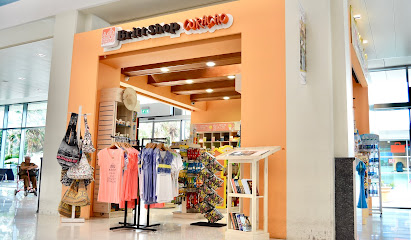
Unique point
Shop at Unique Point in Willemstad for exceptional men's clothing that embodies the vibrant Caribbean culture and style.
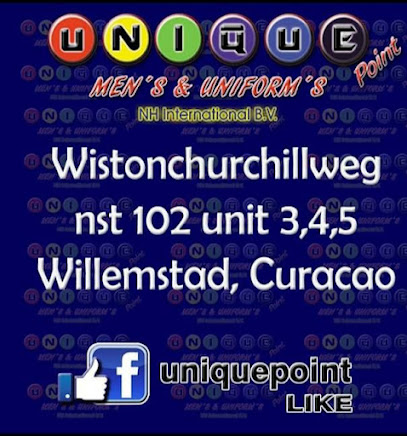
Art-by-Eve
Explore Art-by-Eve in Jan Thiel, Curaçao for unique local gifts and artistic treasures that embody the island's vibrant culture.

Essential bars & hidden hideouts
Zanzibar Beach & Restaurant
Experience the vibrant flavors and stunning views at Zanzibar Beach & Restaurant in Jan Thiel, Curaçao. A perfect blend of beach relaxation and culinary delight.
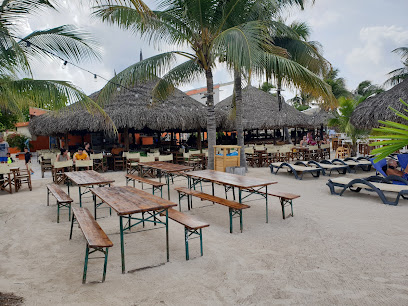
Karakter Beach - Lounge - Restaurant
Discover the tropical charm of Karakter Beach, a culinary haven in Curaçao featuring exquisite dishes and stunning ocean views for a perfect getaway.
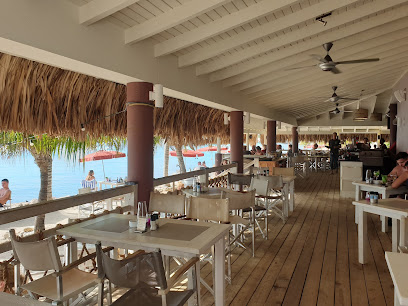
Saint Tropez Ocean Club
Discover the vibrant culinary scene at Saint Tropez Ocean Club in Willemstad, where Caribbean flavors meet stunning ocean views.
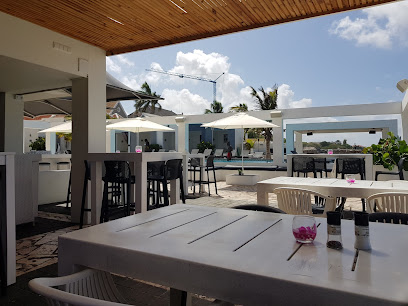
La Bohème Curaçao
Experience the vibrant flavors of Caribbean and international cuisine at La Bohème Curaçao, a culinary gem in Willemstad.
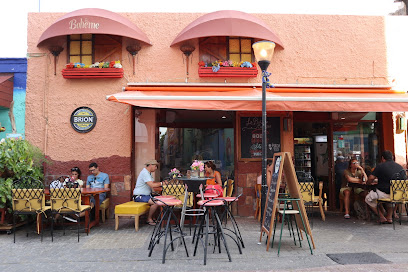
Eetcafé De Buurvrouw
Discover the authentic tastes of Curaçao at Eetcafé De Buurvrouw, where local flavors meet a vibrant dining atmosphere.
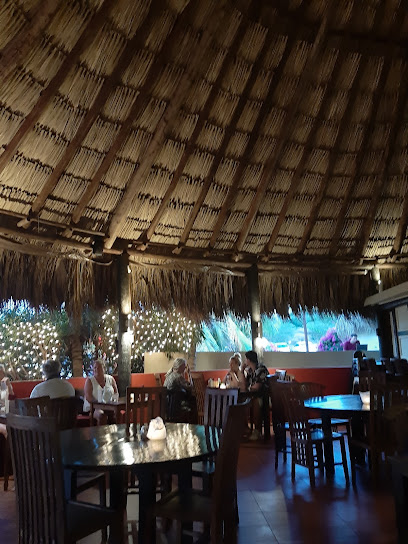
MosaCaña Bar & Kitchen
Discover the flavors of Curaçao at MosaCaña Bar & Kitchen, where culinary creativity meets Caribbean tradition in a vibrant setting.

Wet & Wild Beach Club
Discover the vibrant atmosphere and stunning beauty of Wet & Wild Beach Club in Curaçao, where relaxation meets Caribbean fun.
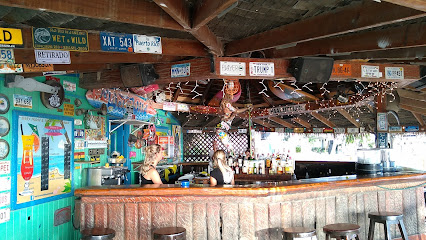
Chill Beach Bar & Grill
Experience the vibrant flavors and stunning ocean views at Chill Beach Bar & Grill in Willemstad, Curaçao - a culinary gem for every traveler.
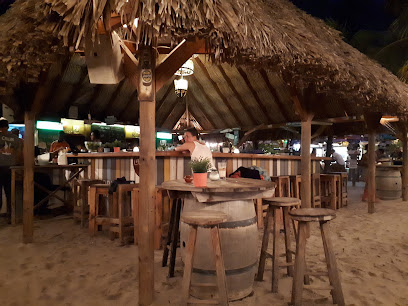
Shelterrock Paradise
Experience the Taste of the Caribbean at Shelterrock Paradise: A Restaurant and Live Music Bar in Curaçao.
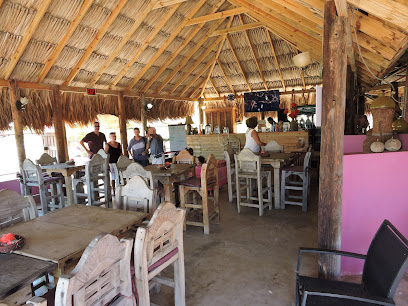
The Niffo Huts
Experience the vibrant flavors of Curaçao at The Niffo Huts, a must-visit restaurant and bar & grill in Sint Michiel.

Netto Bar
Experience the vibrant nightlife at Netto Bar in Otrobanda, Willemstad – a perfect blend of local culture and refreshing cocktails.
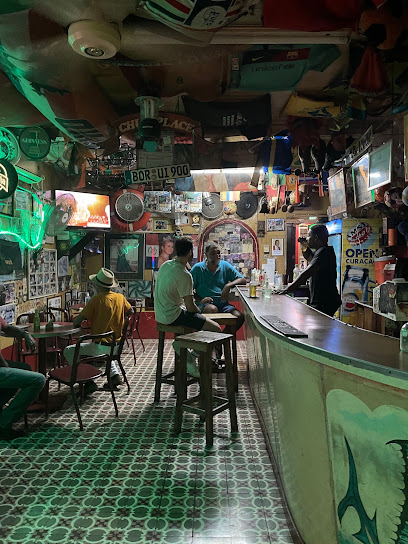
Bahia Beach Bar & Restaurant
Experience the best of local cuisine and stunning ocean views at Bahia Beach Bar & Restaurant in Lagun, Curaçao.

Landhuis Klein Santa Martha hotel
Discover the serene charm of Landhuis Klein Santa Martha – a perfect hotel retreat in Soto, Curaçao with rich culture and breathtaking landscapes.

Sauc'é Curaçao Bar
Discover the vibrant nightlife at Sauc'é Curaçao Bar, where exquisite cocktails and unforgettable moments await in the heart of Curaçao.

Ibiza Grill Curacao
Discover the vibrant flavors of Caribbean cuisine at Ibiza Grill Curacao, a grill restaurant offering a delightful dining experience on the waterfront.
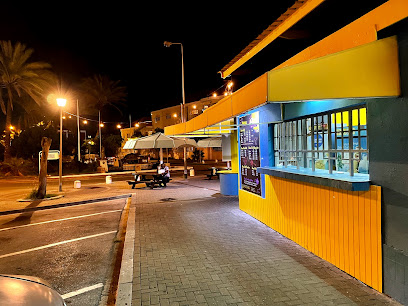
Local Phrases about Groot Santa Martha
-
- HelloBon dia
[Bon dee-ya] - GoodbyeAyo
[A-yo] - YesSi
[See] - NoNo
[No] - Please/You're welcomePor fabor
[Por fa-bor] - Thank youDanki
[Dan-kee] - Excuse me/SorrySkuze mi
[Sku-ze mee] - How are you?Kon ta bai?
[Kon ta ba-ee?] - Fine. And you?Bon. I bo?
[Bon. E bo?] - Do you speak English?Bo papia Ingles?
[Bo pa-pi-ya Ing-les?] - I don't understandMi no ta kompronde
[Mee no ta kom-proen-de]
- HelloBon dia
-
- I'd like to see the menu, pleaseMi ke mira e menu, por fabor
[Mee kee mee-ra e me-nu, por fa-bor] - I don't eat meatMi no kome karni
[Mee no ko-me kar-nee] - Cheers!Salu!
[Sa-loo!] - I would like to pay, pleaseMi ke paga, por fabor
[Mee kee pa-ga, por fa-bor]
- I'd like to see the menu, pleaseMi ke mira e menu, por fabor
-
- Help!Yudami!
[Yoo-da-mee!] - Go away!Bai for di mi!
[Bai for dee mee!] - Call the Police!Yama polis!
[Ya-ma po-lis!] - Call a doctor!Yama un dokter!
[Ya-ma oon dok-ter!] - I'm lostMi a perde mi mes
[Mee a per-de mee mes] - I'm illMi ta malu
[Mee ta ma-loo]
- Help!Yudami!
-
- I'd like to buy...Mi ke kumpra...
[Mee kee koom-pra...] - I'm just lookingMi ta solamente mira
[Mee ta so-la-men-te mee-ra] - How much is it?Kuantu ta esaki?
[Kwan-too ta e-sa-kee?] - That's too expensiveEsaki ta muchu karu
[E-sa-kee ta moo-choo ka-roo] - Can you lower the price?Bo por baha e prijs?
[Bo por ba-ha e prais?]
- I'd like to buy...Mi ke kumpra...
-
- What time is it?Ki ora ta?
[Key o-ra ta?] - It's one o'clockTa un or
[Ta oon or] - Half past (10)Mitad di diez
[Mee-tad dee dee-yes] - MorningMarduga
[Mar-doo-ga] - AfternoonAtardi
[A-tar-dee] - EveningAnochi
[A-no-chee] - YesterdayAyera
[A-ye-ra] - TodayAwe
[A-we] - TomorrowMañana
[Ma-nya-na] - 1Uno
[Oo-no] - 2Dos
[Dos] - 3Tres
[Tres] - 4Cuatro
[Kwah-tro] - 5Cinco
[Seen-ko] - 6Seis
[Say-ees] - 7Siete
[See-ay-te] - 8Ocho
[O-cho] - 9Nueve
[Nwe-ve] - 10Diez
[Dee-yes]
- What time is it?Ki ora ta?
-
- Where's a/the...?Unda ta e...?
[Oon-da ta e...?] - What's the address?Kua ta e adres?
[Kwa ta e a-dres?] - Can you show me (on the map)?Bo por mustra mi (riba mapa)?
[Bo por moos-tra mee (ree-ba ma-pa)?] - When's the next (bus)?Ki ora e siguiente (bus)?
[Key o-ra e see-guien-te (bus)?] - A ticket (to ....)Un biahe (pa ....)
[Oon bya-he (pa ....)]
- Where's a/the...?Unda ta e...?
History of Groot Santa Martha
-
Groot Santa Martha, located on the western side of Curaçao, originally began as a plantation during the Dutch colonial period. Established in the early 18th century, the plantation was primarily used for the cultivation of crops such as maize and beans, and it also supported livestock farming. The plantation was named after Saint Martha, who is venerated in the Catholic tradition.
-
Like many plantations in the Caribbean, Groot Santa Martha was heavily reliant on the labor of enslaved Africans. The plantation was one of the numerous sites on the island where enslaved people were forced to work under harsh conditions. The legacy of slavery is a crucial part of the history of Groot Santa Martha and is remembered through various historical markers and educational programs.
-
The abolition of slavery in 1863 was a significant turning point for Groot Santa Martha. Following emancipation, many formerly enslaved individuals continued to work on the plantation under different labor arrangements. The plantation gradually transitioned from its reliance on slave labor to various forms of paid labor, and its economic focus shifted over time.
-
During World War II, Groot Santa Martha played a strategic role due to its location. Curaçao was a critical point for the Allied forces, mainly because of its oil refineries. The plantation area was used for various military purposes, including housing and training troops. This period brought significant changes to the infrastructure and economy of the area.
-
After World War II, the plantation underwent various transformations. It ceased operating as a traditional plantation and became more diversified. The area saw the development of new industries and infrastructure, including the establishment of community programs aimed at preserving the heritage and culture of Groot Santa Martha. The plantation house and surrounding buildings were restored and repurposed for various cultural and educational activities.
-
Today, Groot Santa Martha is recognized for its cultural and historical significance. Efforts have been made to preserve its heritage, including the restoration of the plantation house, which now serves as a museum. The site hosts various cultural events, educational programs, and tours that aim to educate visitors about the history of the plantation and the broader history of Curaçao. The area is also known for its art and craft initiatives, contributing to the cultural landscape of the island.
Groot Santa Martha Essentials
-
Groot Santa Martha is located in the northwest part of Curaçao. The nearest international airport is Hato International Airport in Willemstad, approximately 30 kilometers away. From the airport, you can rent a car, book a taxi, or arrange for a shuttle service to reach Groot Santa Martha. The journey typically takes around 40 minutes by road.
-
While renting a car is the most convenient way to explore Groot Santa Martha and its surrounding areas, taxis are also available. Public buses do operate on the island, but their schedules can be irregular. For a more local experience, you can also rent a bike to explore the area at your own pace.
-
The official currency in Curaçao is the Netherlands Antillean Guilder (ANG), although US dollars are widely accepted. Credit cards are accepted in most hotels, restaurants, and shops in Groot Santa Martha, but it's advisable to carry some cash, especially for smaller establishments and outdoor markets. ATMs are available, but ensure you have enough cash before traveling to more remote areas.
-
Groot Santa Martha is generally a safe destination for tourists. However, as with any travel destination, it's important to take standard precautions. Avoid walking alone at night in unfamiliar areas and be cautious with your belongings in crowded places. Willemstad has some neighborhoods with higher crime rates, so it's best to stick to well-known tourist areas and seek local advice if you're unsure.
-
In case of an emergency, dial 911 for immediate assistance. There are medical facilities and a police station in Willemstad, which is a short drive from Groot Santa Martha. It's recommended to have travel insurance that covers medical emergencies. For minor health issues, there are pharmacies in the area where you can purchase over-the-counter medications.
-
Fashion: Do dress casually but modestly. Swimwear should be reserved for the beach. Religion: Do respect local customs and traditions, especially when visiting religious sites. Public Transport: Do be patient as public transport can be infrequent. Don’t rely solely on public buses for timely travel. Greetings: Do greet people with a friendly 'Bon Bini' (welcome in Papiamentu). Eating & Drinking: Do try local delicacies like 'Keshi Yena'. Don’t refuse an invitation to share a meal, as it is considered impolite.
-
To experience Groot Santa Martha like a local, visit the local markets and buy fresh produce and handmade goods. Engage with locals, as they are often friendly and willing to share stories and tips about the area. Don't miss visiting the Santa Martha Bay and the nearby salt flats for beautiful natural scenery. Try to participate in local events and festivals to get a true feel of the local culture.
Trending Landmarks in Groot Santa Martha
-
Queen Emma Bridge
-
Landhuis Chobolobo
-
Old Market
-
Curaçao Ostrich Farm
-
Flamingos
-
Shete Boka National Park
-
Museum Kura Hulanda
-
Boka Pistol
-
Fort Beekenburg
-
Tugboat Beach
-
The Curaçao Museum
-
Landhuis Klein Santa Martha hotel
-
Curacao Maritime History Museum / A treasure chest full of history
-
Boka Wandomi
-
Landhuis Bloemhof cultural center
Nearby Cities to Groot Santa Martha
-
Things To Do in Barber
-
Things To Do in Sabana Westpunt
-
Things To Do in Westpunt
-
Things To Do in Sint Michiel
-
Things To Do in Julianadorp
-
Things To Do in Willemstad
-
Things To Do in San Nicolas
-
Things To Do in Savaneta
-
Things To Do in Santa Cruz
-
Things To Do in Pos Chiquito
-
Things To Do in Paradera
-
Things To Do in Sero Blanco
-
Things To Do in Tanki Leendert
-
Things To Do in Oranjestad
-
Things To Do in Noord

